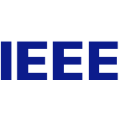We introduce two algorithms, RECURSIA and RRT, designed to increase the compression factor achievable using point-set cover algorithms based on the SIA and SIATEC pattern discovery algorithms. SIA computes the maximal translatable patterns (MTPs) in a point set, while SIATEC computes the translational equivalence class (TEC) of every MTP in a point set, where the TEC of an MTP is the set of translationally invariant occurrences of that MTP in the point set. In its output, SIATEC encodes each MTP TEC as a pair, <P,V>, where P is the first occurrence of the MTP and V is the set of non-zero vectors that map P onto its other occurrences. RECURSIA recursively applies a TEC cover algorithm to the pattern P, in each TEC, <P,V>, that it discovers. RRT attempts to remove translators from V in each TEC without reducing the total set of points covered by the TEC. When evaluated with COSIATEC, SIATECCompress and Forth's algorithm on the JKU Patterns Development Database, using RECURSIA with or without RRT increased compression factor and recall but reduced precision. Using RRT alone increased compression factor and reduced recall and precision, but had a smaller effect than RECURSIA.
翻译:我们引入了两种算法,即RECURSIA和RRT,目的是使用基于SIA和SIATEC模式发现算法的点定覆盖算法提高压缩系数。SIATEC在一个点数组中计算出最大可翻转模式(MTP),SSIATEC在一个点数组中计算出每个MTP的翻译等值类(TEC),MTP的TEC在点数组中是翻译性变化的发生。在其输出中,SIATEC将每个MTP TEC编码成双对,<P,V>,其中P是首次出现MTP和V的一组非零矢量组,用来绘制P在其他点数组。RECUSIA在每个点数组计算出一个点数组中,MTEC是一个翻译性等值类(TEC),其中MTP的计算方法是将每个MTP TEC的翻译从每个点数组中移出,而不会减少TEC的总数组。在用COACTC、SIAC和REC进行评估时,将使用C的精确度、SIARSBA和SBA值增加的计算结果。



